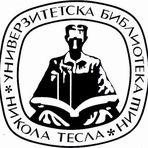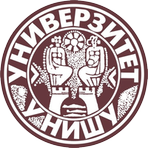Title
Odnos osobina metafore i njihovog razumevanja: psiholingvistički pristup
Creator
Milenković, Katarina,
CONOR:
51987209
Copyright date
2021
Object Links
Select license
Autorstvo-Nekomercijalno-Bez prerade 3.0 Srbija (CC BY-NC-ND 3.0)
License description
Dozvoljavate samo preuzimanje i distribuciju dela, ako/dok se pravilno naznačava ime autora, bez ikakvih promena dela i bez prava komercijalnog korišćenja dela. Ova licenca je najstroža CC licenca. Osnovni opis Licence: http://creativecommons.org/licenses/by-nc-nd/3.0/rs/deed.sr_LATN. Sadržaj ugovora u celini: http://creativecommons.org/licenses/by-nc-nd/3.0/rs/legalcode.sr-Latn
Language
Serbian
Cobiss-ID
Theses Type
Doktorska disertacija
description
Datum odbrane: 30.09.2021.
Other responsibilities
član komisije
Tasić, Miloš
član komisije
Opsenica Kostić, Jelena
član komisije
Stepanov, Strahinja
Academic Expertise
Društveno-humanističke nauke
University
Univerzitet u Nišu
Faculty
Filozofski fakultet
Group
Departman za psihologiju
Alternative title
The Relation between metaphor features and their comprehension
Publisher
[К. S. Мilenković]
Format
257 str.
description
Biografija autora: str. 257,
Bibliografija: str. 171-205.
description
Philological studies
Abstract (en)
Starting from one of the most dominant concepts in cognitive sciences, metaphor, this research paper explores how individual differences in fluid and crystallized intelligence influence the comprehension of metaphors normed with regards to their features of metaphoricity, aptness and familiarity in Serbian. More precisely, it investigates the interrelatedness between fluid and crystallized intelligence, on the one hand, and the comprehension of non-literary and literary metaphors on the other. The research is designed in such a way so as to compare the success on intelligence tests to the success on metaphor comprehension tests (two types of metaphor with regards to three dimensions). That is why 6 questionnaries consisting of three different tests were composed – Raven’s Progesssive Matrices, Semantic Similiarties Test and the open interpretation test of metaphors. The first two tests measure fluid and crystallized intelligence, respectively, whereas the last one measures the ability to understand and interpret non-literary and literary metaphor. The participants who completed the questionnaire are university students whose mother tongue is Serbian or who speak Serbian fluently. This paper is built on several theories and models, the most important of which are the theory of fluid and crystallized intelligence (Horn & Catell, 1966), the model of analogical reasoning (Tourangeau & Sternberg, 1981, 1982; Trick & Katz, 1986; Gentner & Clement, 1988) and the model of conceptual combination/categorization (Glucksberg & Keysar, 1993; Estes & Glucksberg, 2000; Glucksberg & Haught, 2006; Jones & Estes, 2005, 2006). When it comes to the statistical analysis, the main focus was on correlations and partial correlations of the selected variables. After analysing the correlations between the intelligence tests and metaphor comprehension tests, a
detailed description of the results is given in order to present their significance, draw conclusions and relate them to the paper’s aims, theoretical framework and previos research. The quantitative analysis of the results shows that the correlations between the individual difference measures and metaphor comprehension tests are significant. Namely, the obtained results confirm that cognitively more complex metaphors, such as literary, are primarily understood by using crystallized intelligence, and by relying on fluid intelligence to a certain extent, whereas simpler non-literary metaphors are mostly understood by using crystallized intelligence, as well as that the intelligence influence depends on metaphor features with regards to which they were normed.
Authors Key words
metafora, razumevanje metafore, fluidna inteligencija, kristalizovana inteligencija, individualne razlike, analoško rasuđivanje, kategorizacija, metaforičnost, pogodnost izvora da opiše cilj, stepen poznatosti
Authors Key words
metaphor, metaphor comprehension, fluid intelligence, crystallized intelligence, individual differences, analogical reasoning, categorization, metaphoricity, aptness, familiarity
Classification
81'23:81'373.612.2(043.3)
Subject
Linguistics, Psycholinguistics
Type
Tekst
Abstract (en)
Starting from one of the most dominant concepts in cognitive sciences, metaphor, this research paper explores how individual differences in fluid and crystallized intelligence influence the comprehension of metaphors normed with regards to their features of metaphoricity, aptness and familiarity in Serbian. More precisely, it investigates the interrelatedness between fluid and crystallized intelligence, on the one hand, and the comprehension of non-literary and literary metaphors on the other. The research is designed in such a way so as to compare the success on intelligence tests to the success on metaphor comprehension tests (two types of metaphor with regards to three dimensions). That is why 6 questionnaries consisting of three different tests were composed – Raven’s Progesssive Matrices, Semantic Similiarties Test and the open interpretation test of metaphors. The first two tests measure fluid and crystallized intelligence, respectively, whereas the last one measures the ability to understand and interpret non-literary and literary metaphor. The participants who completed the questionnaire are university students whose mother tongue is Serbian or who speak Serbian fluently. This paper is built on several theories and models, the most important of which are the theory of fluid and crystallized intelligence (Horn & Catell, 1966), the model of analogical reasoning (Tourangeau & Sternberg, 1981, 1982; Trick & Katz, 1986; Gentner & Clement, 1988) and the model of conceptual combination/categorization (Glucksberg & Keysar, 1993; Estes & Glucksberg, 2000; Glucksberg & Haught, 2006; Jones & Estes, 2005, 2006). When it comes to the statistical analysis, the main focus was on correlations and partial correlations of the selected variables. After analysing the correlations between the intelligence tests and metaphor comprehension tests, a
detailed description of the results is given in order to present their significance, draw conclusions and relate them to the paper’s aims, theoretical framework and previos research. The quantitative analysis of the results shows that the correlations between the individual difference measures and metaphor comprehension tests are significant. Namely, the obtained results confirm that cognitively more complex metaphors, such as literary, are primarily understood by using crystallized intelligence, and by relying on fluid intelligence to a certain extent, whereas simpler non-literary metaphors are mostly understood by using crystallized intelligence, as well as that the intelligence influence depends on metaphor features with regards to which they were normed.
“Data exchange” service offers individual users metadata transfer in several different formats. Citation formats are offered for transfers in texts as for the transfer into internet pages. Citation formats include permanent links that guarantee access to cited sources. For use are commonly structured metadata schemes : Dublin Core xml and ETUB-MS xml, local adaptation of international ETD-MS scheme intended for use in academic documents.


